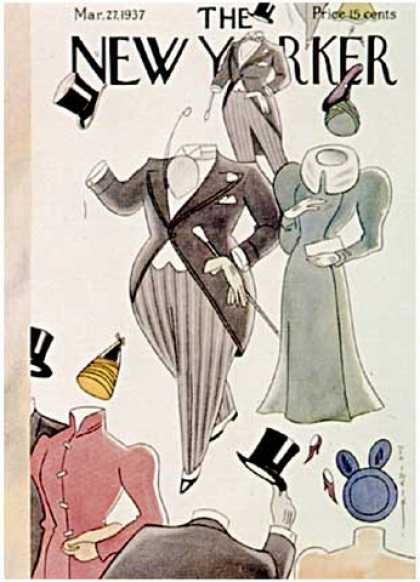For the article that Michael Happy surely intends to write about Frye’s love affair with The New Yorker, here are the references—at least most of them—plus a few from Helen.
I have been rather handicapped by the lack of money, but that doesn’t matter so much this first term. But if you really want to do something for me, my own self‑sacrificing little girl—WHEN THE HELL ARE YOU GOING TO COME THROUGH WITH SOME NEW YORKERS? (Frye‑Kemp Correspondence, CW, 2, 620-1)
To switch the subject to civilization for the moment. Thank you very very much for the New Yorkers. You are a sweet little girl. It was just pure nerves that made me bark for them in my last letter [above]. The idea that you might have forgotten to buy them owing to pressure of work or something nearly made me collapse. I spent a marvellous weekend with them. It was just as well they came when they did, as the boots took my shoes Saturday morning to repair them and didn’t return them till Sunday morning—I had to go to Hall in my tennis shoes. (ibid., 630)
The poet may change his mind or mood; he may have intended one thing and done another, and then rationalized what he did. (A cartoon in a New Yorker of some years back hit off this last problem beautifully: it depicted a sculptor gazing at a statue he had just made and remarking to a friend: “Yes, the head is too large. When I put it in exhibition I shall call it ‘The Woman with the Large Head.’”) (Anatomy of Criticism, 87)
The dandy attitude survives in the early (twenties) essays of Aldous Huxley, whose epigrams are mainly inverted clichés, in Yeats’ association of dandyism & heroism, in Lytton Strachey, & in the contemporary New Yorker—see its Knickerbocker figure and again the inverted melodrama clichés of its cartoons. (Notebooks for Anatomy of Criticism, CW 23, 265)
Many years ago Edmund Wilson, in a New Yorker review, connected the Houdini situation with the dying & reviving god. [“And the magician who escapes from the box: what is he but Adonis and Attis and all the rest of the corn gods that are buried and rise? This is quite plain in the case of Houdini” (Classics and Commercials: A Literary Chronicle of the Forties (New York: Farrar, Straus, 1950), 151. Wilson’s review appeared in New Yorker, 11 March 1944.] (ibid., 294)
As I see it now, there are two main themes: the relation of literature to the other arts & disciplines, and the relation of the hypothetical to the existential: i.e., art & religion. I call it Tentative Conclusion, & begin, possibly, with the New Yorker cartoon. [The “head is too large” cartoon, referred to above]. (ibid., 202)
Don’t assume that the intentional fallacy is always a fallacy, i.e. that you can judge a satire without taking account of a humorous or ironic intention. The answer “but it’s supposed to be that way” is valid for many objections—cf. the New Yorker “large head” problem. [The “head is too large” cartoon, referred to above]. (ibid., 237)
